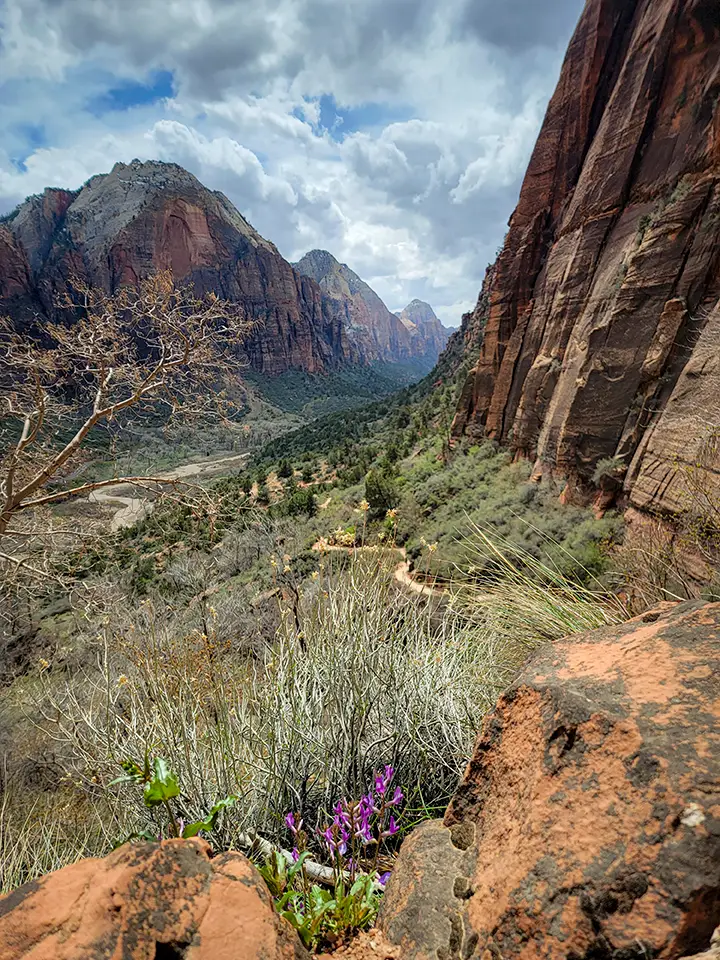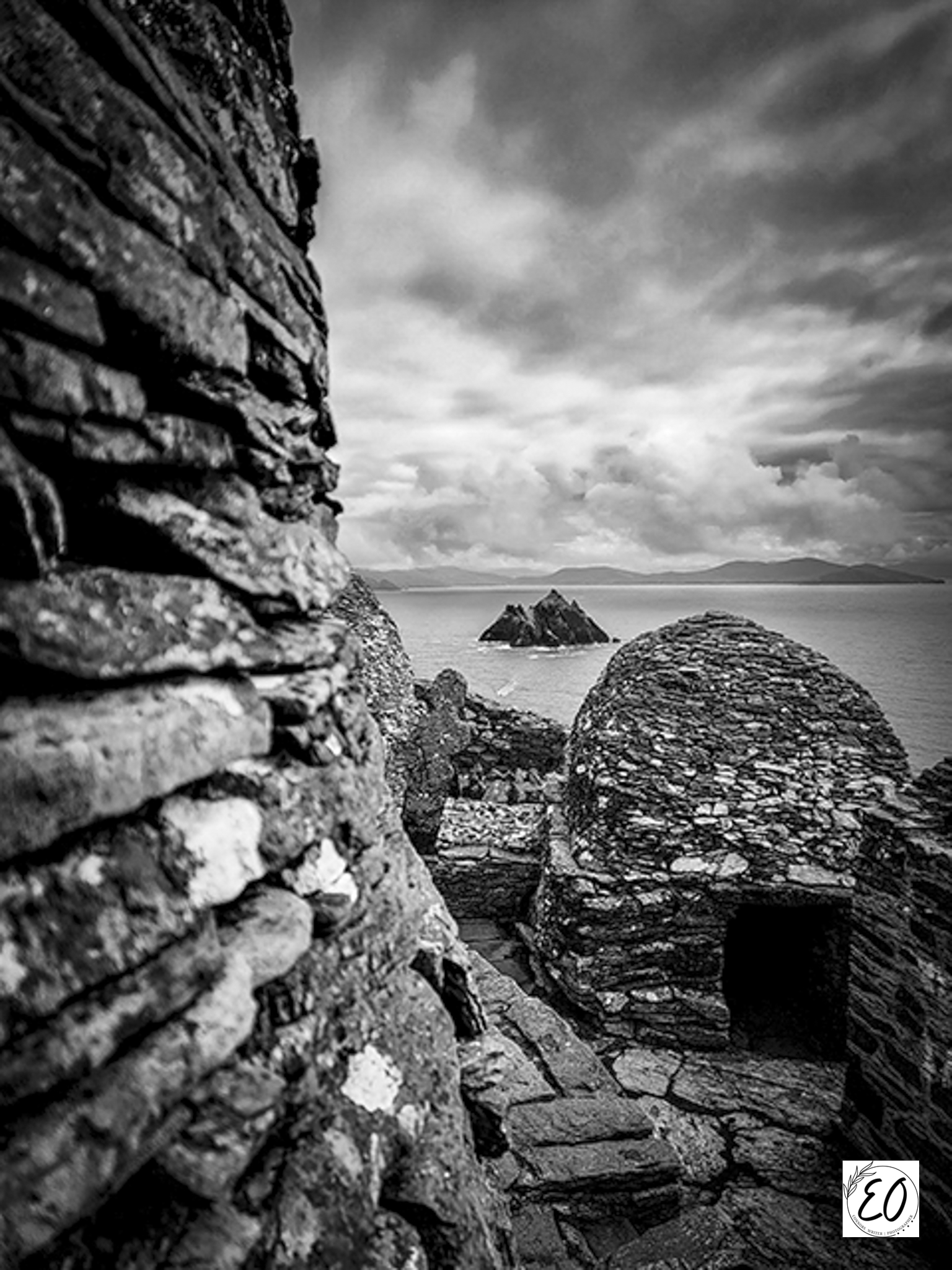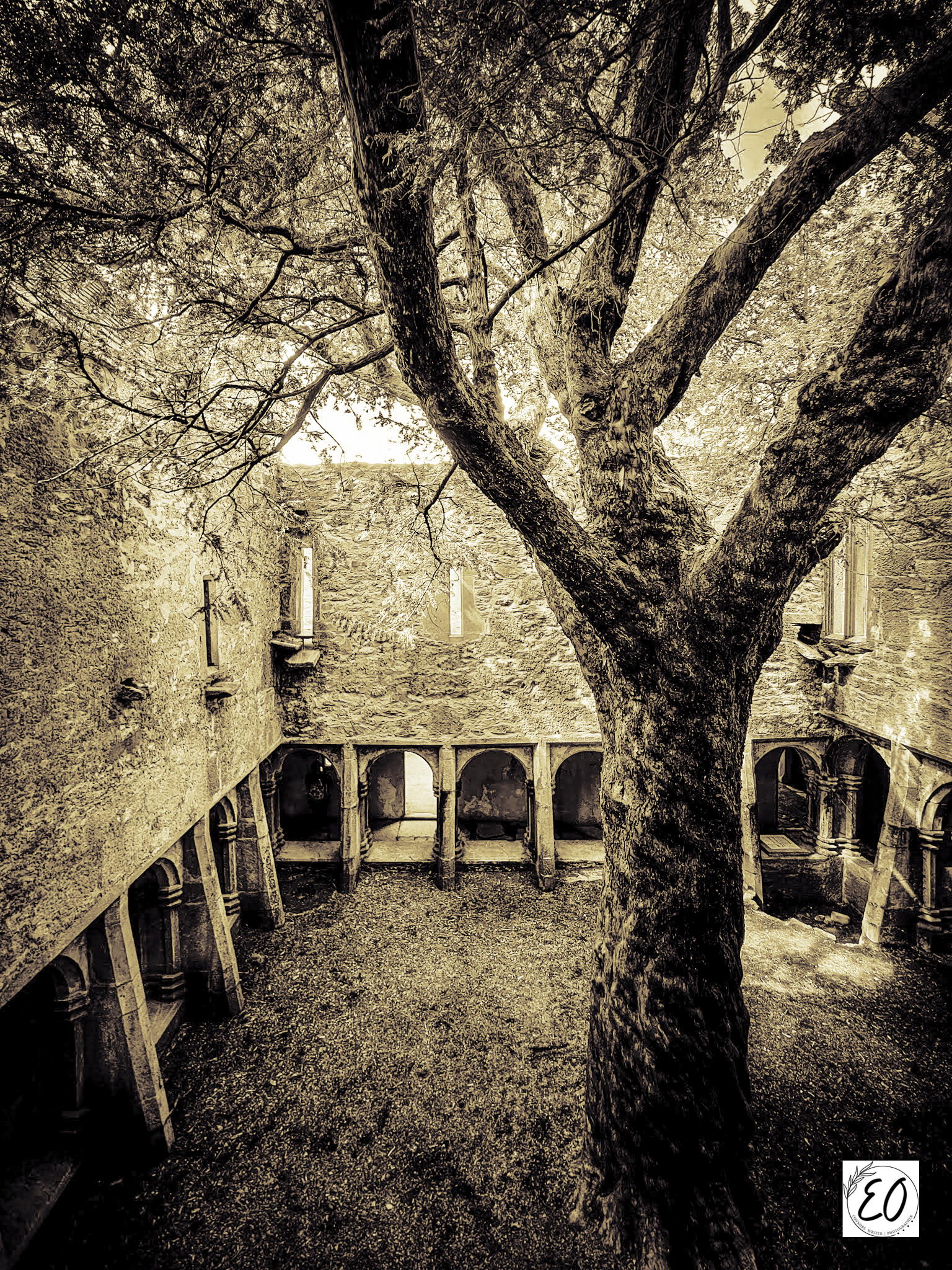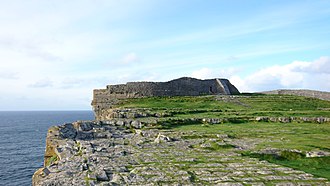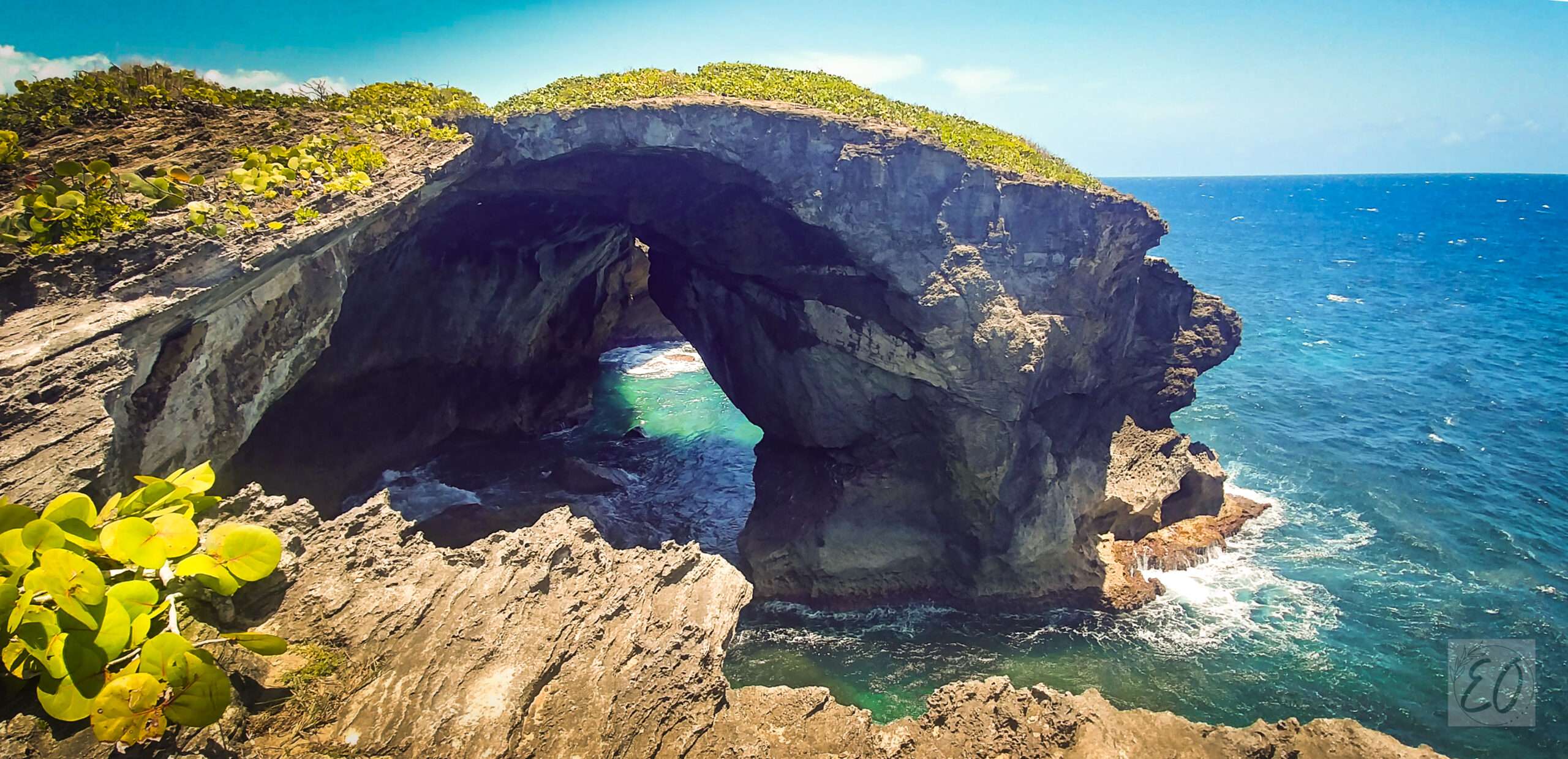Visiting the Rock of Cashel Ireland (with pictures)
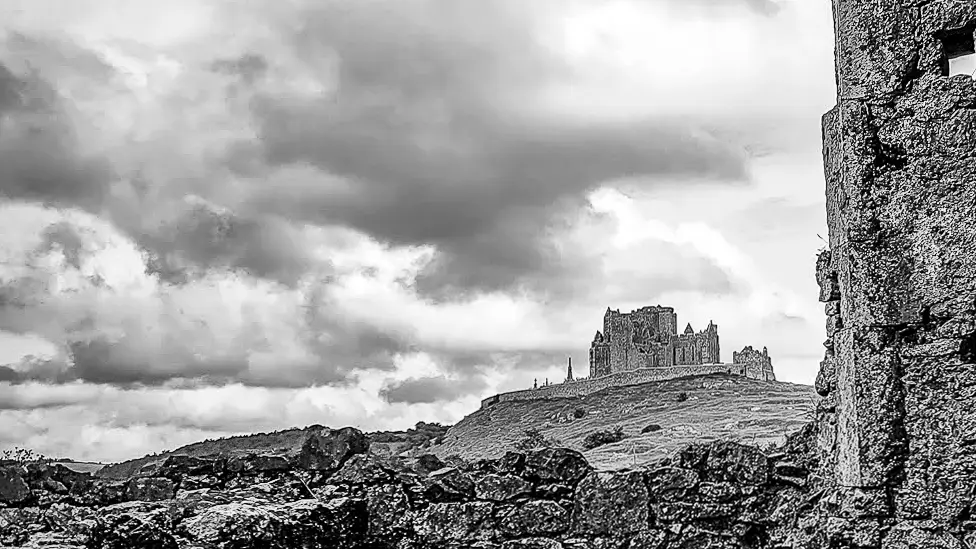
Why You Should Visit the Rock of Cashel
The Rock of Cashel has played a pivotal role in the history of Ireland. Though it’s a relatively small site, the imposing fortress perches majestically atop a limestone outcrop in County Tipperary, and has witnessed centuries of intrigue, power struggles, and religious significance.
Its easy access from Dublin, Cork or Limerick, its imposing architecture, fascinating history, and beautiful setting make the Rock of Cashel an iconic landmark and popular attraction.
Table of Contents
What You Need to Know
Hours of Operation:
- Mid-March to Mid-October 9AM to 5:30 PM. Last entry at 4:45 PM
- Mid-October to Mid-March 9AM to 4:30 PM. Last entry at 3:45 PM
- Closed 24-26 December
Group/Senior: €6.00
Child/Student: €4.00
Family: €20.00
Entry to Cormac’s Chapel is by guided tour only. Limited tickets must be purchased on site.
- Be prepared for rain. An umbrella or waterproof jacket and shoes is always a good idea.
- The Rock of Cashel is spread over a significant area, and exploring the various structures and ruins can take 30-90 minutes.
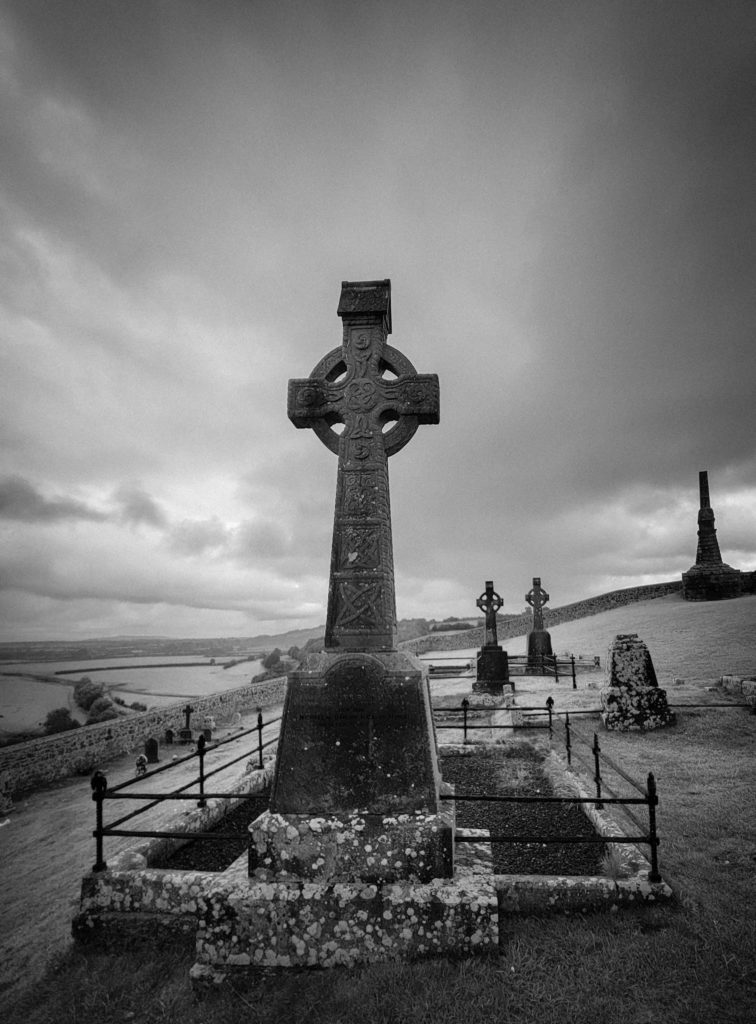
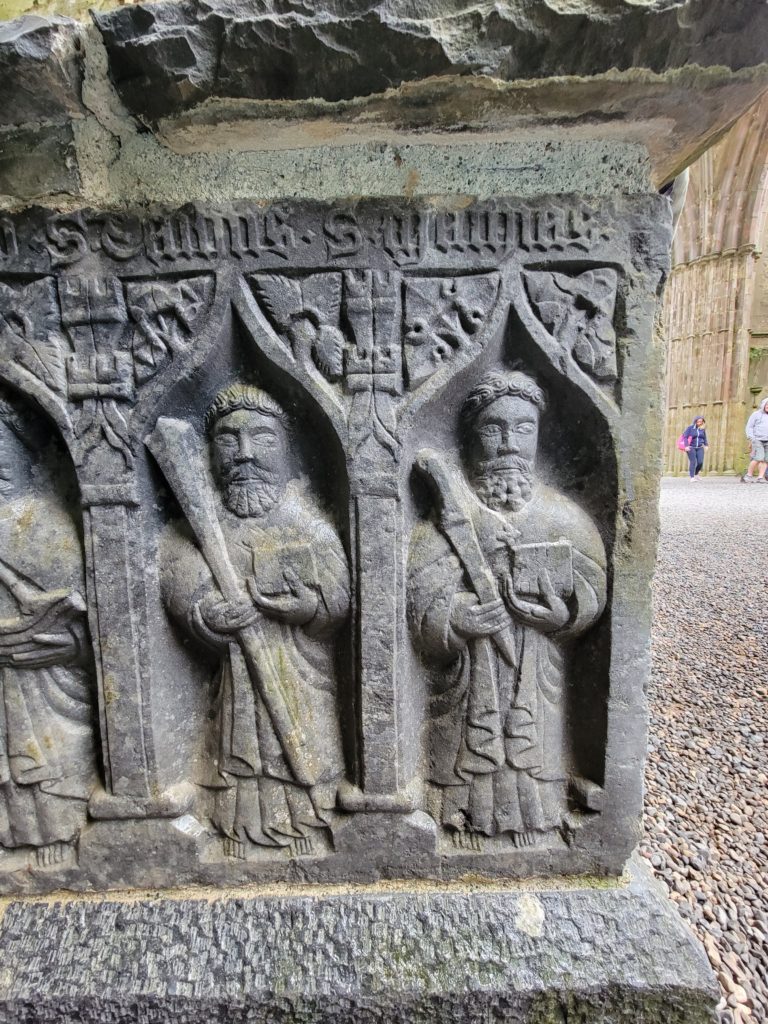
Historical Significance of the Rock of Cashel
The Rock of Cashel holds immense historical significance, dating back over a thousand years. Originally, the site served as a fortress for the kings of Munster, who ruled the region from the 4th to the 12th century.
In 1101, the site was gifted to the Church, and construction of a grand cathedral began. This marked the beginning of the Rock of Cashel’s transformation into a religious center. Over the centuries, various structures were added, including Cormac’s Chapel, a stunning example of Romanesque architecture. The Rock of Cashel became a place of pilgrimage, attracting both Irish and international visitors who sought solace and spiritual enlightenment.
In 1647, during the Irish Confederate Wars, the fortress was besieged by parliamentary forces. The subsequent massacre of the defenders left a lasting mark on the site’s history. Today, visitors can explore the ruins and imagine the tumultuous events that unfolded amidst these ancient stones.
Legends and Myths Surrounding the Rock of Cashel
The Rock of Cashel is steeped in legends and myths that have been passed down through generations. One of the most famous tales involves St. Patrick, the patron saint of Ireland. Legend has it that St. Patrick visited the Rock of Cashel and converted the King of Munster to Christianity by driving his staff into the ground, which miraculously turned into a tree. This event solidified the Rock of Cashel’s status as a sacred site and cemented its association with St. Patrick.
Another intriguing legend tells of a pact made with the devil. According to the story, a chieftain named Cormac MacCarthy desired to build a magnificent chapel atop the Rock of Cashel. The devil offered to complete the construction overnight in exchange for the soul of the first living creature to enter the chapel. Cleverly, Cormac tricked the devil by releasing a rooster who entered the chapel, thus foiling the devil’s plans.
The Rock of Cashel also features in the mythological cycle of Irish folklore. It is said to be one of the places where the Tuatha Dé Danann, a supernatural race in Irish mythology, descended from the heavens to rule over Ireland.
Architectural Features of the Rock of Cashel
The Rock of Cashel is renowned for its impressive architectural features that showcase different periods of its history. The most prominent structure is Cormac’s Chapel, built in the 12th century. This chapel is a masterpiece of Romanesque architecture, characterized by round arches, intricate carvings, and decorative details. The interior is remarkable for preserved Romanesque frescoes, a truly rare occurrence, and the only ones in all of Ireland.
Adjacent to Cormac’s Chapel is the grand cathedral, originally constructed in the 13th century. Although now in ruins, the cathedral still retains its Gothic splendor, with towering arches and remnants of stained glass windows.
The Rock of Cashel also boasts several impressive Celtic crosses, standing proudly amidst the ruins. These intricately carved crosses are adorned with knotwork and depict scenes from biblical stories. They serve as a testament to the artistic skills of the craftsmen who created them and provide a glimpse into the religious symbolism of the time.
The Rock of Cashel in Irish Literature and Folklore
The Rock of Cashel has long been a source of inspiration for Irish writers and poets. Its majestic presence and rich history have captured the imaginations of many, resulting in numerous references in literature and folklore. One of the most famous literary works featuring the Rock of Cashel is William Butler Yeats’ poem, “The Tower,” which contemplates the passage of time and the enduring nature of the site.
In addition to literature, the Rock of Cashel has also played a role in traditional Irish music and folklore. Songs and ballads have been composed, recounting the tales and legends associated with the site. These songs serve as a reminder of the Rock of Cashel’s cultural significance and its place in the hearts of the Irish people.
Events and Festivals at the Rock of Cashel
Throughout the year, the Rock of Cashel hosts various events and festivals that celebrate its history and cultural heritage. One such event is the Rock of Cashel Summer Concert Series. Held annually, this series showcases talented musicians and performers who take to the stage against the backdrop of the Rock of Cashel. It’s a unique opportunity to enjoy live music in a truly awe-inspiring setting.
In addition to music, the Rock of Cashel also hosts historical reenactments and medieval festivals. These events transport visitors back in time, allowing them to experience the sights and sounds of medieval Ireland. From jousting tournaments to traditional crafts and activities, these events provide a glimpse into the past and create a vibrant atmosphere at the Rock of Cashel.
Nearby Attractions and Day Trips from the Rock of Cashel
If you have more time, consider venturing to the picturesque town of Cahir. Here, you can visit the impressive Cahir Castle, one of Ireland’s largest and best-preserved castles. The castle’s towering walls and intricate architecture provide a glimpse into Ireland’s medieval past.
Zion National Park: Best 2 Day Itinerary for Spring
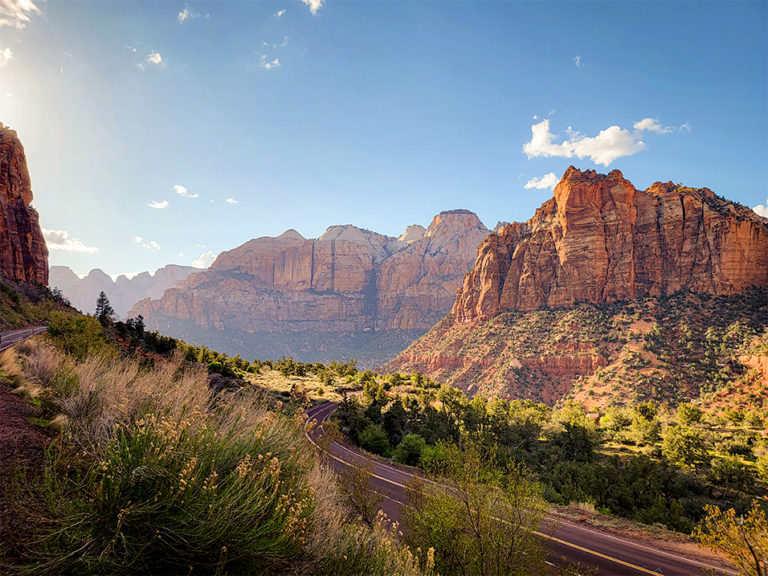
Zion National Park, located in southwestern Utah, is a breathtaking destination that attracts millions of visitors each year. With stunning canyons, towering rock formations, and diverse wildlife, Zion offers endless opportunities for outdoor adventure and exploration. If you only have two full days to visit Zion, here’s how you can make the most of it.
ZION NATIONAL PARK MAP
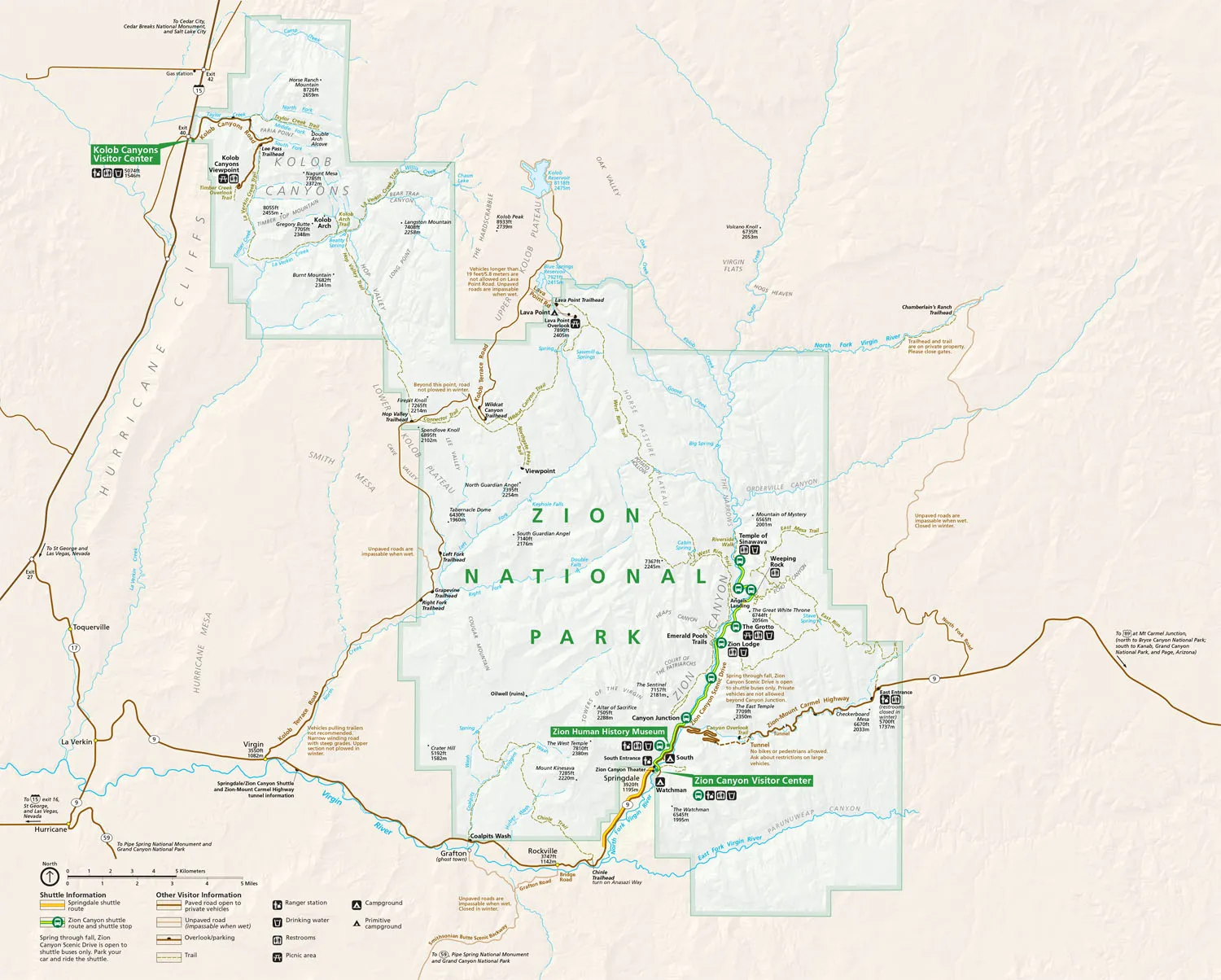
Day 1
If you’re driving from Vegas or Salt Lake City, arrive as early as possible and check into your hotel. We stayed at the Bumbleberry Inn which included a hearty breakfast at their Porter’s Restaurant. You can take your chances on a parking spot at the Visitor Center, or take the free Springdale Shuttle from one of its many stops along the main road. It’s a short ten minute ride, though your chances of getting a seat increase the further away from the Zion Visitor center that you stay. We had no problem getting on at Bumbleberry, which was stop 5.
Disembark at the Visitor Center, where you can pay your entrance fee. The receipt you receive is your ticket and valid for one week. The Visitor Center opens at 8:00 am and closes at 6:00 pm. Don’t forget to pick up a park map and get hiking recommendations from the rangers.
From the Visitor Center, take the shuttle bus to Zion Canyon Scenic Drive, which is closed to private vehicles during peak season (late March through November). The shuttle bus is the only way to access the scenic drive, and it runs every 10-15 minutes from early morning until late evening.
The scenic drive is a 6-mile stretch of road that runs through the heart of Zion Canyon, offering breathtaking views of towering sandstone cliffs, cascading waterfalls, and the Virgin River. You can get off the shuttle at any of the nine stops along the way to explore the park’s trails and landmarks. Since we arrived later in the afternoon, we opted for a shorter hike called the Watchman Trail that leaves from the Visitor Center, no shuttle involved. It’s a moderate ascent with beautiful views of Springdale and the mouth of the canyon.
If you have more time on your first day, choose a trail of your choice and then stop at the Zion Lodge, which offers dining options, a gift shop, and access to several hiking trails, including the easy Riverside Walk and the more challenging Emerald Pools hike. After taking in the scenic drive, head to the Zion Lodge for lunch. The lodge offers a variety of dining options, including a café, a grill, and a restaurant. After lunch, explore the Emerald Pools Trail, which is a moderate 3-mile hike that takes you past three beautiful pools, each with its own waterfall. This trail is suitable for all ages and offers fantastic views of the park’s red rock formations.
After exploring the Zion Lodge area, take the shuttle to stop 9, Temple of Sinawava. From here, you can hike the famous Zion Narrows, which is a 16-mile slot canyon that offers a truly unique hiking experience. However, if you don’t have time for the full hike, you can still enjoy a short walk along the river or take the Riverside Walk trail to enjoy the scenic views.
In the evening, we took the shuttle back to Springdale for dinner. There are a variety of dining options. Wait times can be long. Luckily, there are plenty of stores and art shops to poke in while you wait.
Day 2
With a full day to explore the park, it’s a perfect time to try one of the famous longer hikes at Zion: The Narrows, Scout Lookout, or Angel’s Landing (if you’re lucky enough to get a permit). Start early to avoid the crowds (at 7 am you can walk onto the shuttle, at noon we waited 45 minutes in a long line). When we visited in mid-April, the Narrows was closed due to flooding. It’s over 1,000 feet deep and only 20 to 30 feet wide in some places. The hike through The Narrows is a unique and unforgettable experience that takes you through the middle of the canyon, with towering cliffs on either side of you. The hike can be done in a few hours, but it’s recommended to give yourself at least half a day to fully enjoy the experience.
We chose to do Scout Lookout via West Rim Trail, leaving from Shuttle stop 6, the Grotto. I applied for a permit to hike Angel’s Landing. We didn’t win one in the lottery at the National Park website, but were able to view it from Scout Lookout as it is the last 1/4 mile of the West Rim Trail. It’s not for the faint of heart.
In the evening, we drove through the Zion Tunnel, a 1.1-mile engineering feat of the 1920s with “windows” cut through the rock for light and views, and parked near the Canyon Overlook Trailhead. It’s a short one mile round trip that offers stunning views of the canyon below. We arrived shortly before sunset to find a wedding party taking photographs and families arriving with pizza boxes to enjoy the natural display.
Day 3
We had a flight to catch in Vegas in the evening, so for the second half of our full day, we rented e-bikes in Springdale and rode the whole scenic drive ourselves. It was a great way to stop and take photographs where we wanted, and not have to wait in the lines for the shuttle. Alternatively, you could take a horseback ride through the park’s backcountry with Canyon Trail Rides. The ride takes you through stunning scenery and offers a peaceful and relaxing way to end your day in Zion National Park. Or, visit Zion Ponderosa Ranch Resort, which offers a variety of activities for visitors, including horseback riding, zip-lining, and ATV tours.
Final Thoughts:
While two full days in Zion National Park may not be enough time to see everything the park has to offer, it is certainly enough time to experience some of the park’s most stunning sights and activities. Remember to pack plenty of water, sunscreen, and comfortable shoes for hiking, and plan your visit in advance to make the most of your time in this beautiful destination.
Revealing the Haunting Beauty of Skellig Michael, Ireland
Revealing the Haunting Beauty of Skellig Michael, Ireland
Skellig Michael is a UNESCO World Heritage Site located in County Kerry, off the southwest coast of Ireland. It is known for the remains of a Christian monastic settlement that may date back as far as the 6th century. The monks lived in beehive-shaped stone huts and built terraced gardens to grow crops. The island was an important pilgrimage site for centuries, but has become world renowned more recently for its use as a location in the Star Wars franchise. It’s one of my don’t-miss destinations in Ireland.
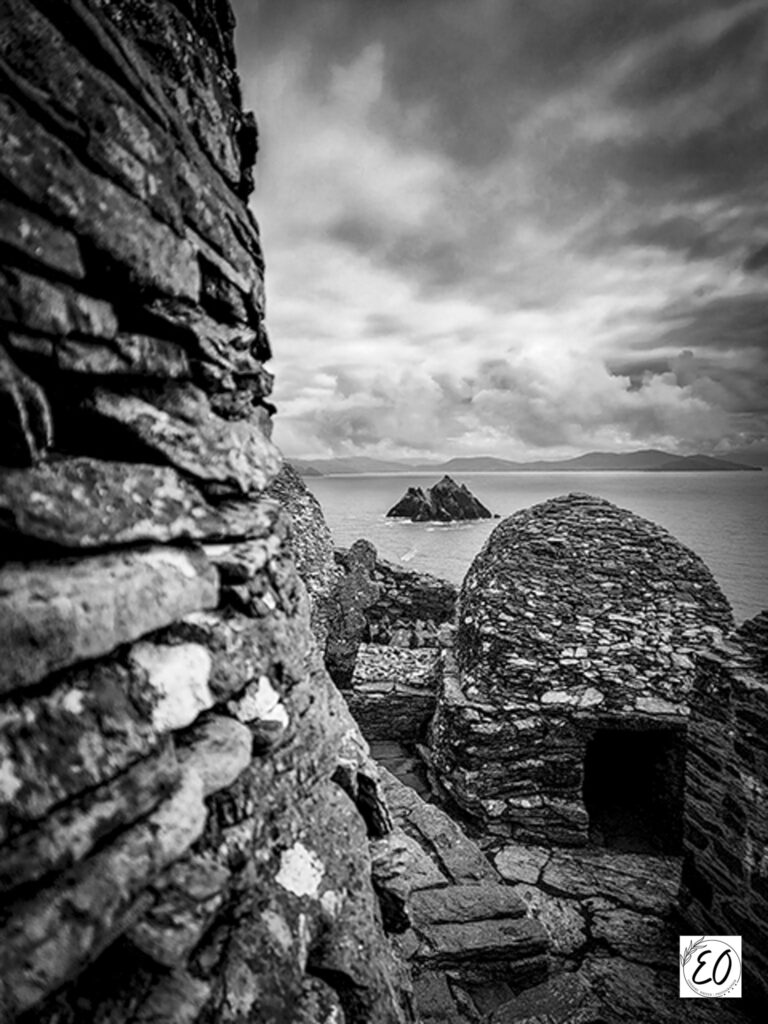
How to Get There
To visit the island, you will need to take a boat from one of the tour operators that offer trips from the harbor of Portmagee, or the Visitor Center on Victoria Island, just across the bridge from Portmagee. Tours typically depart in the morning and return in the afternoon, allowing for two hours on Skellig Michael. Access to the island is weather dependent and some tour operators may cancel or postpone the trip in case of bad weather. Additionally, a limited number of visitors are allowed on the island each day. Advanced booking is highly recommended.
To purchase tickets in Portmagee, find the small glass tour building at the harbor. Public parking is available in a nearby lot with public restrooms. The Visitor Center on Victoria Island offers more of an experience while you wait for your tour. There is free parking, public restrooms, a cafe, small museum about the Skelligs, and a gift shop. In addition, a short film about the site runs throughout the day in their auditorium.
What to Bring
Both the return boat journey and the island itself can be quite windy and cold even in summer. Be sure to bring warm clothing, waterproof gear, and sturdy footwear. Additionally, pack binoculars, sunscreen and a hat to protect from the sun. There are no restaurants or snack bars on Skellig Michael so you will also need to carry water to keep hydrated and snacks or a lunch.
If you are prone to seasickness, don’t forget the Dramamine! Sea conditions may vary by the hour. The morning we went, we encountered fifteen foot swells. Bringing these supplies will be key to making your experience on Skellig Michael an enjoyable one.
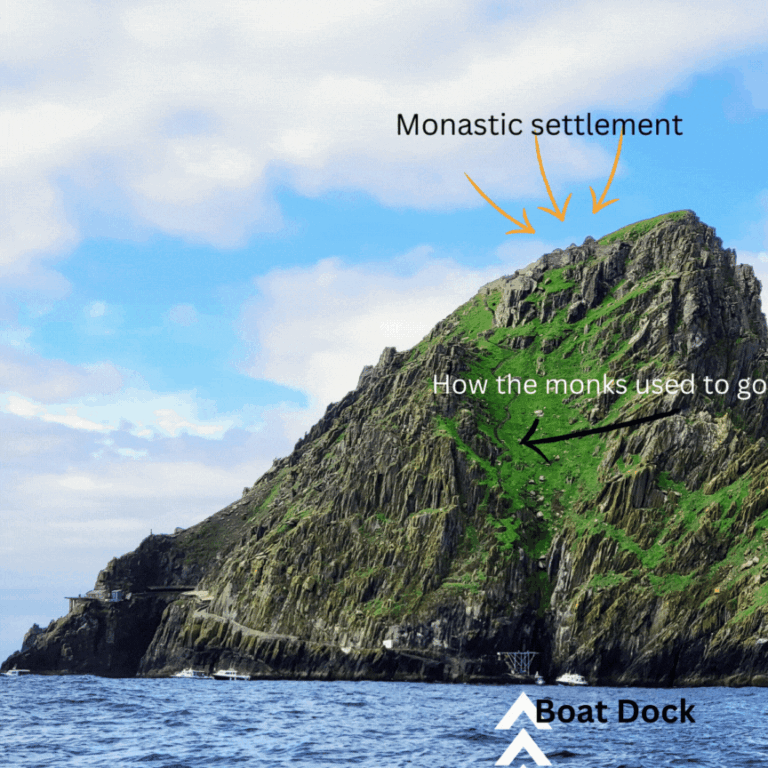
What To Expect
It’s important to note that visitors must be physically fit as the island has steep, uneven, and sometimes narrow paths. There are 600 stone steps to reach the monastic settlement at the top with no guard rails or fences. People with a fear of heights may find it difficult to traverse the path so close to the cliff edge and sheer drop to the sea, particularly on the way down. We saw several people descending the steps on their bottoms. There are two areas on the climb that make convenient rest stops to catch your breath when you need to.
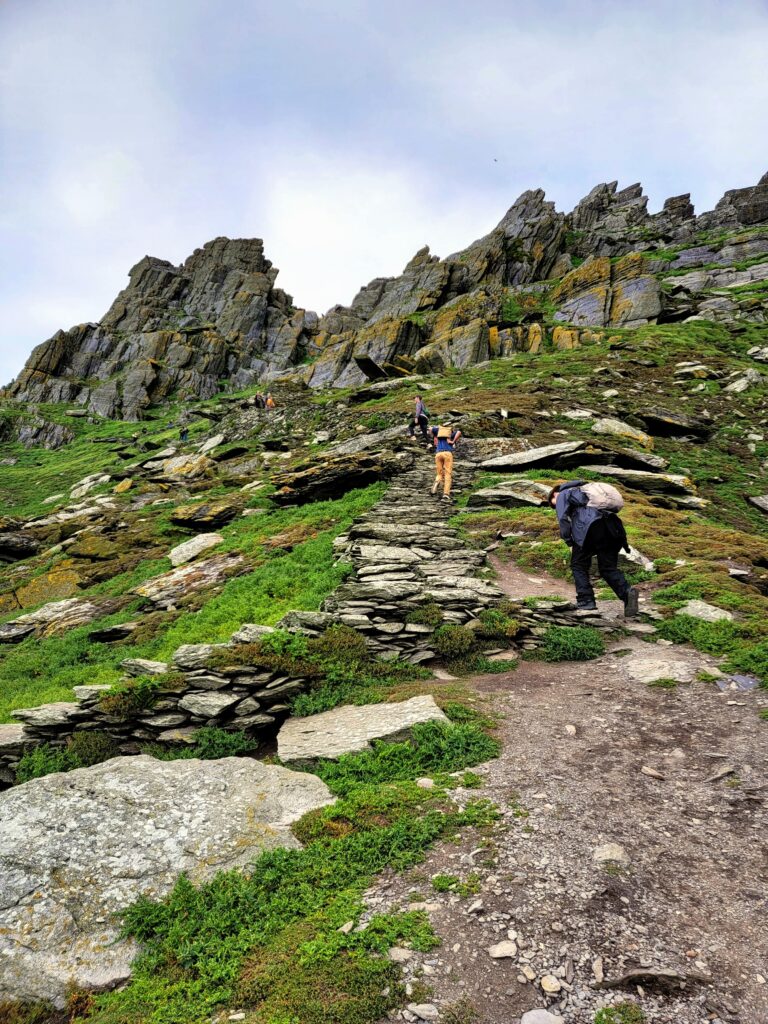
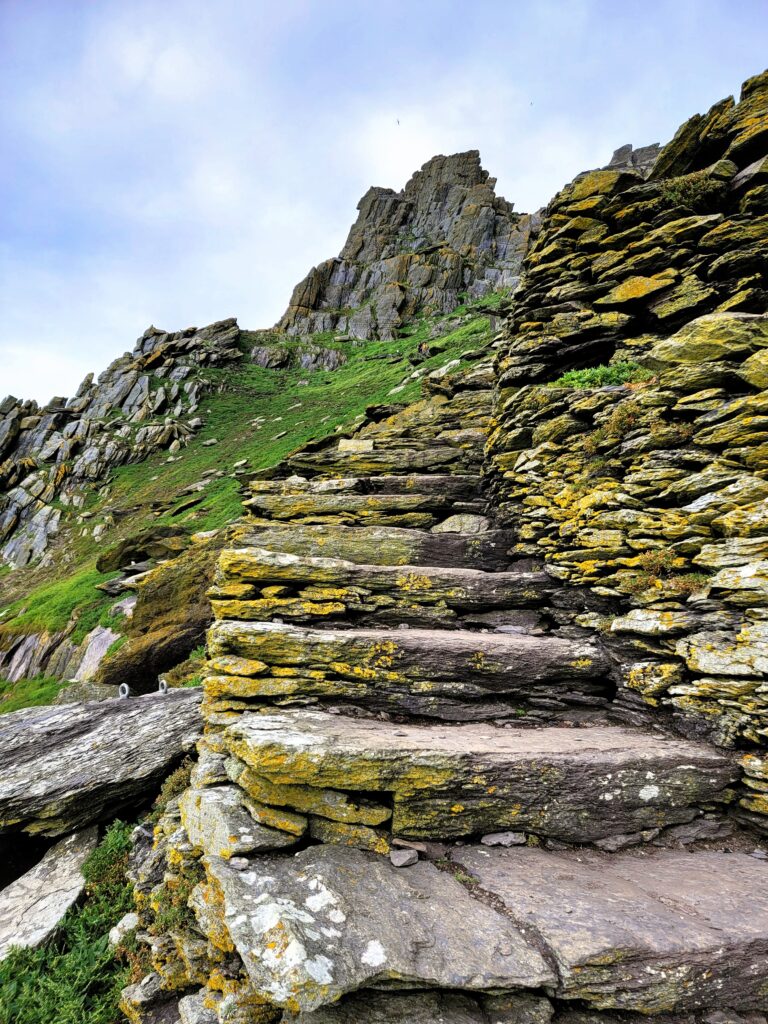
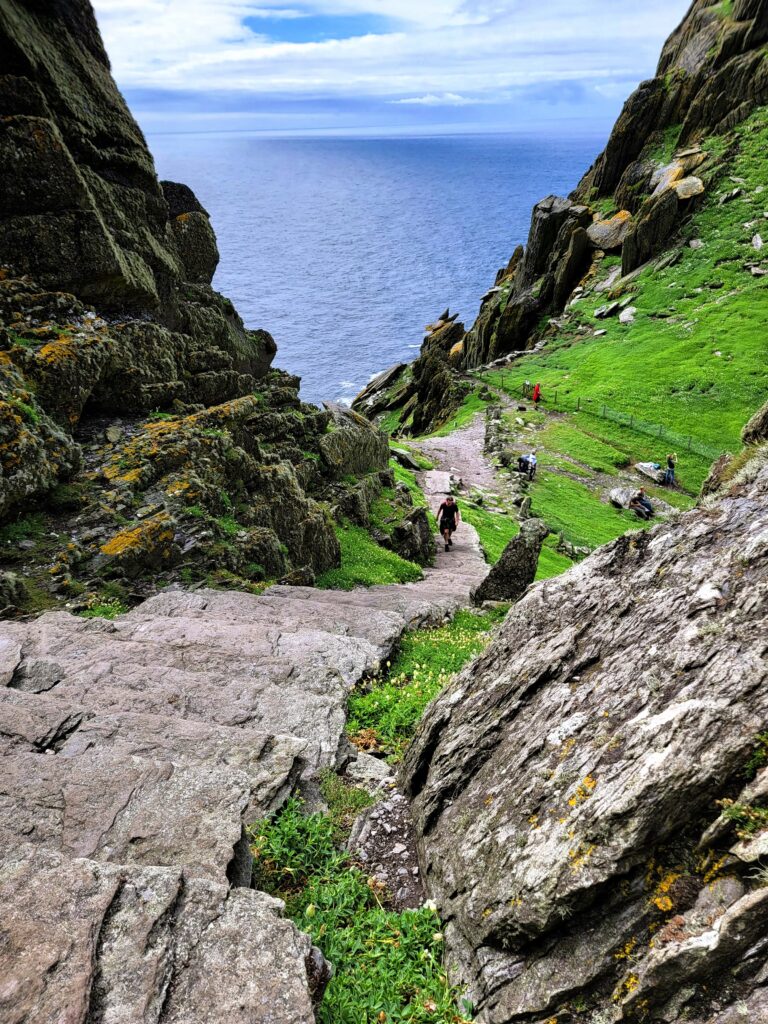
While the tour operators will tell you that there are no facilities once you leave the mainland, that is not strictly true. There are no bathrooms on the small open boats during the 40 minute or so ride in each direction. On the island, however, we did find a small public restroom with three stalls not too far from the dock, and before the stairs.
Once at the top, visitors can expect to see the remains of stone beehive huts, an oratory, and a number of other architectural features that were constructed by the monks who lived there. Also expect to be wowed by incredible views, and the number of seabirds that still inhabit nearby Little Skellig.
Special Considerations
Because tours to Skellig Michael are weather dependent, they are frequently canceled. To have the best chance of making a tour, leave room in your itinerary for two back-to-back days in the area. If your tour is canceled, you’ll have another opportunity to go if the weather clears. I recommend a visit to Victoria Island if you plan to stay in the immediate vicinity, or some time exploring the Ring of Kerry or Killarney National Park.
10 of the Most Fascinating Ancient Ruins in Ireland
No trip to Ireland is complete without a ramble through the mysterious and majestic ruins of the country’s rich history. They provide a window into long-gone eras. From Neolithic structures that pre-date the Pyramids of Giza to romantic battle sites filled with stories of valor and tragedy, here are ten of the most fascinating ancient ruins in Ireland.
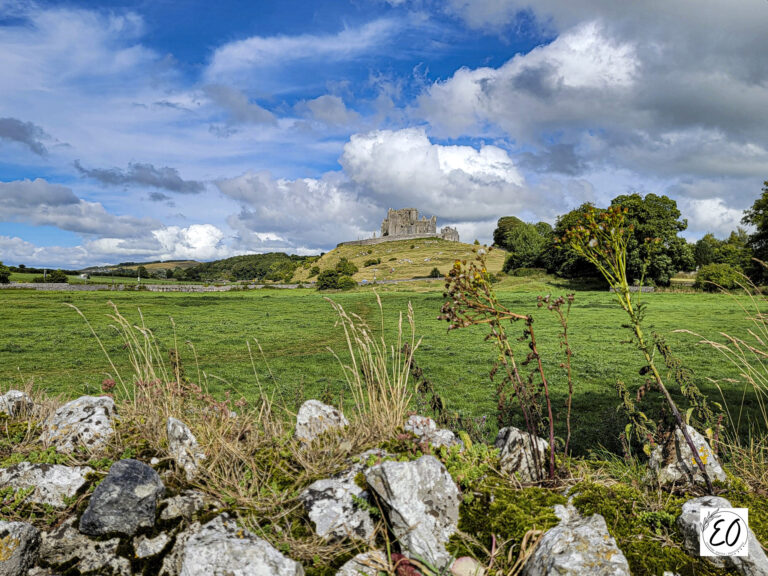
Few sites in Ireland have as much historical significance as the Rock of Cashel. On this site above the Tipperary plain, St. Patrick converted and baptized the King of Munster in the 400s AD. For centuries, the fortification perched atop the steep limestone outcrop was the seat for the Kings of Munster – and was fought over by the various Celtic tribes. In the early 1100s, one of the Kings of Munster (Muirchertach Ua Briain) donated the Rock to the Catholic Church, and the round tower, chapels and other buildings were added shortly thereafter.
The views over the countryside are beautiful. From its cliff-top height, we watched a rainstorm sweep across the fields toward us from miles away. There’s something magical about the place. It is one of the most popular ancient ruins in Ireland and a must-see for history enthusiasts. Save some room for scones and tea at one of the tea rooms at the base of the hill. Public restrooms are available near the car park.
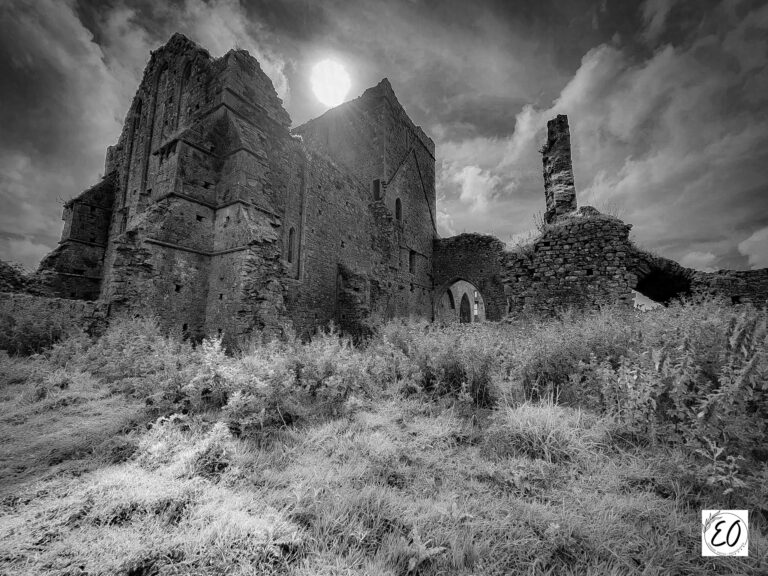
Hore Abbey
Hore Abbey was founded in 1266 as a Benedictine Monastery. Legend states that Archbishop David McCarvil dreamed that the Benedictines were conspiring to murder him. He expelled them in 1272 and let the Cistercians assume control. The remains of the church and grounds are full of arches, niches, and nooks worth exploring. Combine it with a visit to the Rock of Cashel which sits just up the hill.
There are no public facilities available here, and no official tours, but some posted signs give more information for the curious. It’s best to park in the car park at the Rock of Cashel and walk down. Wear your trekking shoes to negotiate the cow patties.
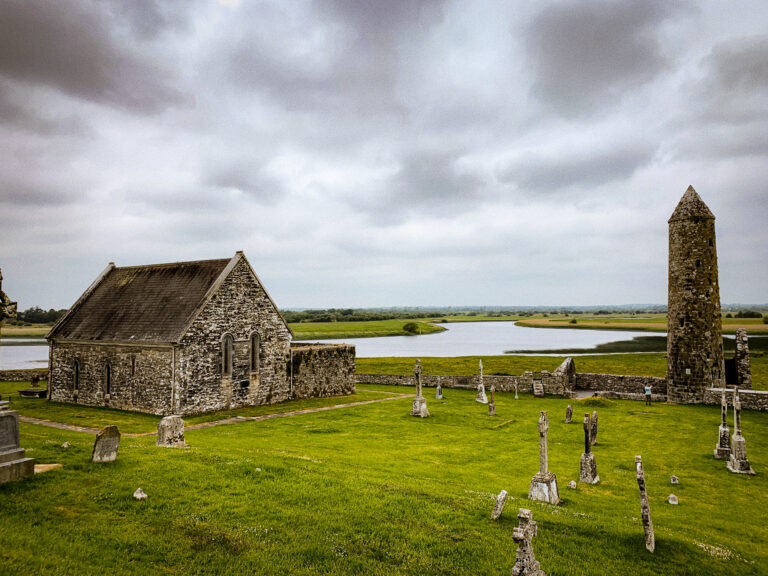
Clonmacnoise Monastery and Round Tower
Clonmacnoise Monastery and Round Tower is one of the earliest Christian sites in Ireland. Founded in 545 AD by St. Ciaran in County Offaly near the Shannon River, the great stronghold was expanded over the centuries with an impressive round tower (909 AD) and seven churches. Visitors get a glimpse of 1,700 years of Irish history. Make sure to bring your camera to take stunning photographs of the site and the surrounding farmland. On our honeymoon decades ago, we stayed in a thatched cottage nearby. You can have the site completely to yourself early in the morning. The graves make for excellent rubbings if you have the materials.
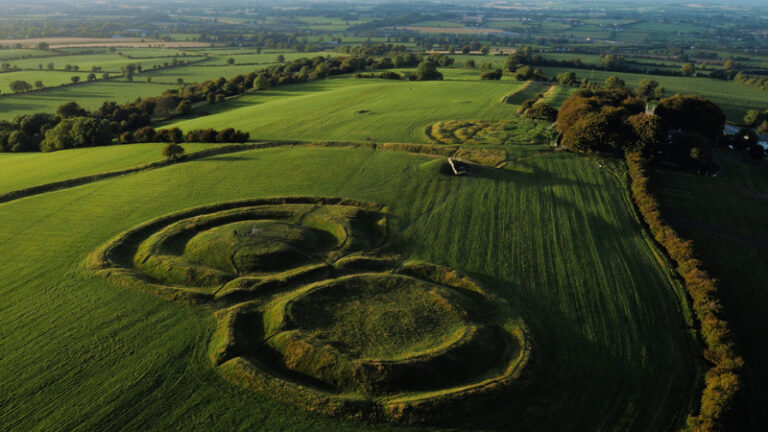
Hill of Tara, County Meath
Located in the Boyne Valley, the Hill of Tara was an important Iron Age hillfort and the traditional seat of power for high kings throughout Ireland’s history. The site is comprised of ancient passage graves, a stone circle, dwellings and monuments built in 5000 BC. It’s believed to have been used as a ceremonial meeting place where rituals may have been conducted as large assemblies were seen at the site. There are still visible carvings at Tara, with many depicting horses and chariots to mark victories in battle.
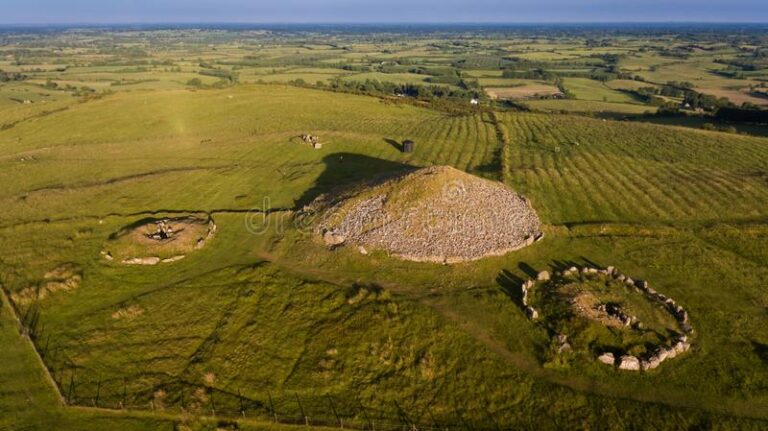
Loughcrew Cairns, County Meath
Built over five thousand years ago, Loughcrew Cairns is an ancient burial site consisting of several ring-shaped stone mounds set in a picturesque valley. The site boasts some of the finest and largest examples of Neolithic art in Ireland, with circles and symbols carved onto some of the stones. There are also stunning views over the surrounding countryside from atop one of the mounds.
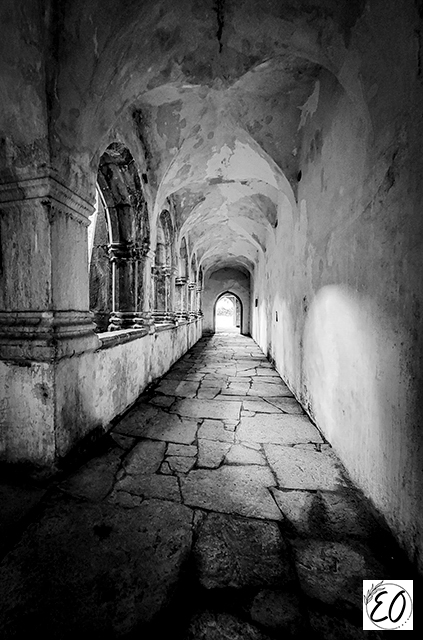
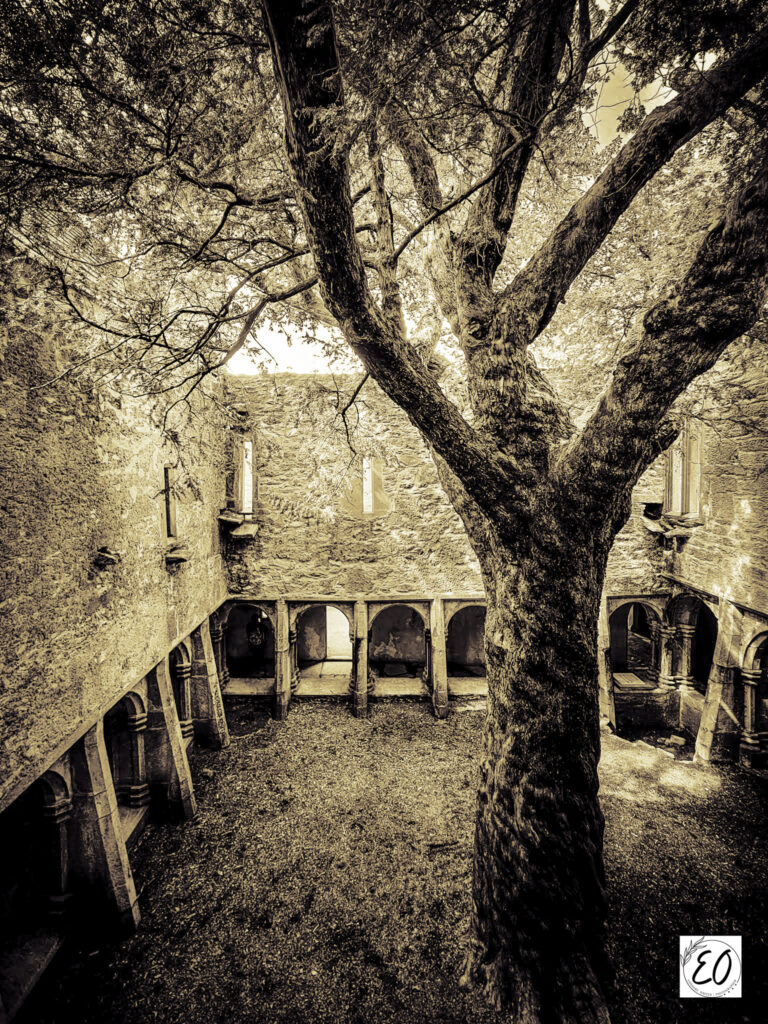
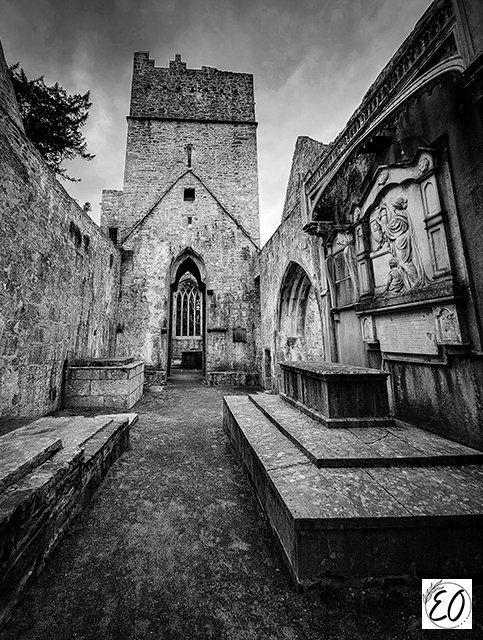
Muckross Abbey, County Kerry
Muckross Abbey, situated in the stunning setting of Killarney National Park has something to offer every visitor. Though it is believed to date back to the 11th century, its origins are shrouded in myth and legend. One such myth is that the abbey was built overnight by a band of elves. Another legend attributes the founding of the abbey to a local Irish chieftain called MacCostellane and his powerful clan. The clan’s loyalty to their chief came with a heavy price, when they were purportedly slaughtered to the last person in a single night by an army from Munster province.
The monks of Muckross Abbey, like many other Catholic monasteries of the time, practiced a peaceful and highly ordered form of worship. Daily life revolved around prayers and rituals such as Vespers, Lauds and Compline along with the Seven Sacraments. In addition to reciting their prayers in Latin, the monks also engaged in more creative forms of worship such as music, sculpture and painting. As one of Ireland’s most iconic monasteries, Muckross Abbey provides visitors with an insight into how the vibrant faith-based culture influenced medieval Europe.
After its abandonment, the Abbey lay dormant for many years before its stunning natural beauty was re-discovered in 1848. The ruins were so well preserved that many believed they had been left intact due to supernatural forces. It has been linked to many strange occurrences, such as whispers in the night, unexplained lights and even the appearance of a ghostly face in one of its windows.
Muckross Abbey has become a popular tourist attraction, and one of my very favorites for its completeness and beauty. From the small parking lot, follow the paved road for about a quarter mile to reach the abbey. Pony traps are available in the parking lot if you don’t wish to walk. No facilities at this entrance to Killarney National Park.
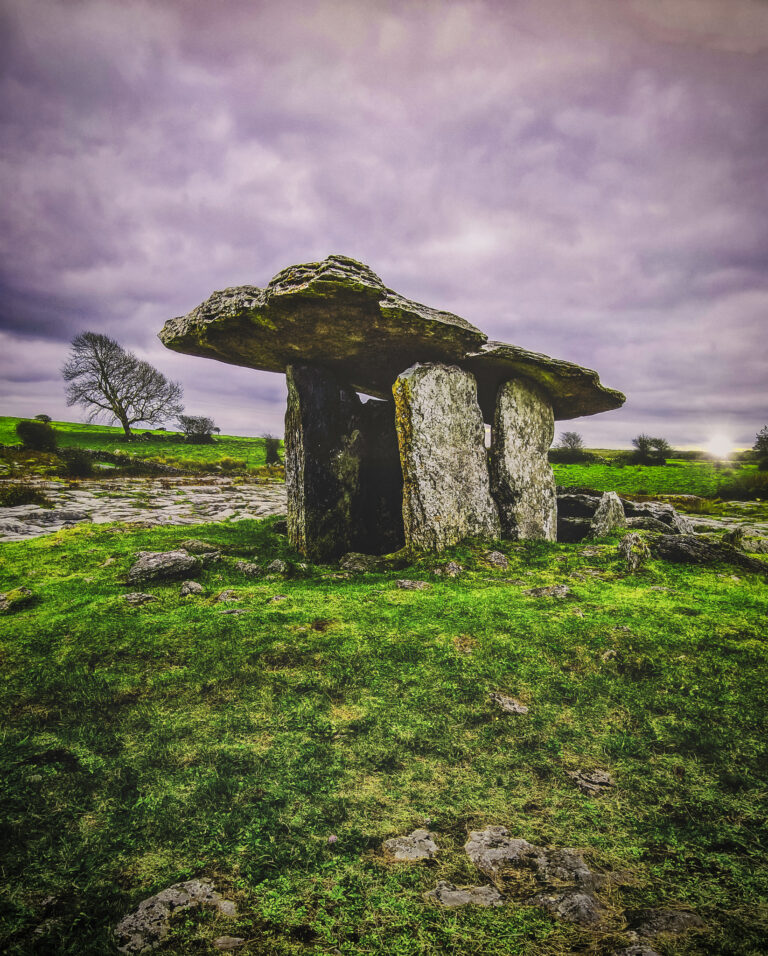
Poulnabrone Dolmen
Considered one of Ireland’s oldest monuments, the Poulnabrone Dolmen is a megalithic portal tomb that dates back 4,800 years. It stands on an isolated limestone plateau in the Burren region and consists of two large standing stones supporting a massive capstone set atop them. Its original purpose is still unknown, but some speculate that it was used as a burial chamber for ancient Celts. The structure has been carefully preserved to this day, making it a great place to explore Irish history.
Dun Aonghasa
Perched on a breathtaking cliff-edge overlooking the Atlantic Ocean, Dun Aonghasa is the largest of the prehistoric stone forts of the Aran Islands. It is enclosed by three massive dry-stone walls. A chevaux-de-frise, blocks of limestone set vertically into the ground to deter attackers, still stands. Originally constructed c.1100 BCE, it’s thought to have been a significant religious centre in Iron Age Ireland. It was re-fortified around 700-800 AD. Excavations revealed significant evidence of prehistoric metalworking, as well as several burials.
The fort is about half a mile uphill from the Visitors Center. Part of the path is rough, natural rock. Boots or strong walking shoes are recommended. Be especially careful near the cliffs as there is no fence or barrier at the edge. Public restrooms are available in the Visitors Center.
From the ferry terminal, you can rent a bike or hire a pony trap to get to the ruins and explore the island. There are fewer than a hundred cars on the island for the inhabitants, and no way for visitors to bring one.
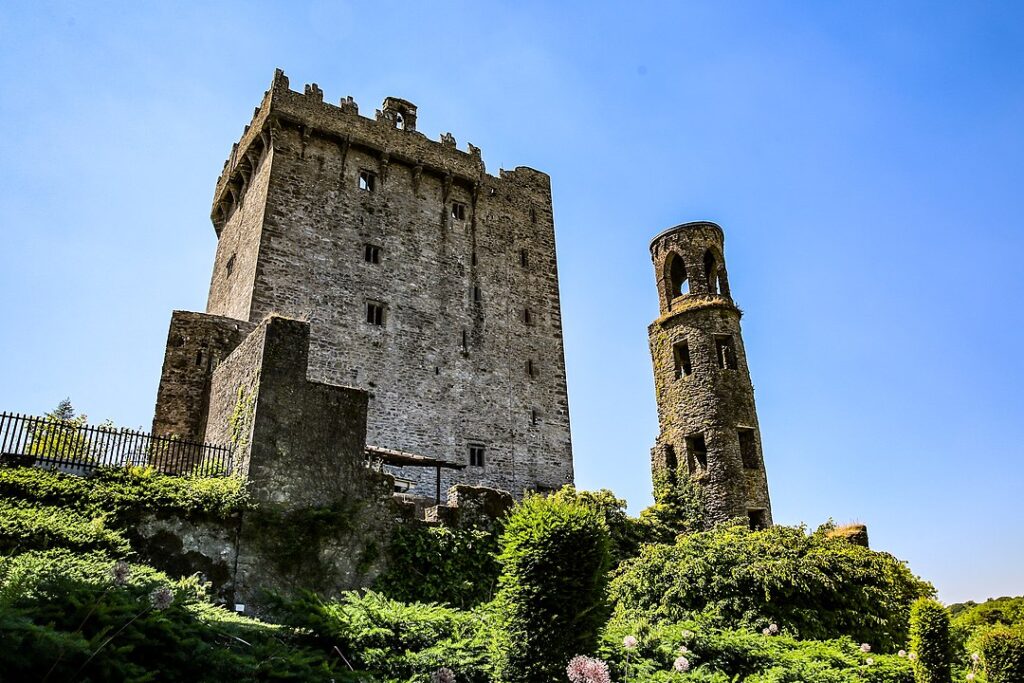
Blarney Castle, County Cork
Blarney Castle is a medieval fortress situated on the River Martin in County Cork. It dates back to 1446 and holds the famous Blarney Stone, which, according to legend, lets those who kiss it become incredibly persuasive in their speech- being “as good as giving a blarney”. There are many other spots of interest at Blarney Castle including an impressive castle keep, gardens and water gardens and the Witch’s Kitchen. Just a head’s up though–I heard a rumor that the locals have been known to pee on the stone for a laugh at the tourists.

Skellig Michael, County Kerry
Located off the western coast of County Kerry, Skellig Michael is one of Ireland’s most iconic ancient ruins. It was home to a medieval monastery which was built in the 6th century by hermit monks. The breathtakingly rugged island features a steep climb of over 600 steps on a sheer cliff-face to get to its remarkable structures. The ruins include six monastic cells, two beehive huts, and the remains of an oratory chapel where pilgrims worshipped. It is said that their spirituality gave the island its powerful energy and aura. Today, you can visit the site which is now a UNESCO World Heritage Site and feel its mystical peaceful atmosphere for yourself. For a more in-depth look at Skellig Michael, visit this post.
**For fine art prints of images in this post visit the Photographs tab**
A Mesmerizing Exploration of La Cueva del Indio en Puerto Rico

La Cueva del Indio en Puerto Rico is a must see for outdoor lovers or anyone looking to escape the city for an afternoon. It is one of the most famous of the more than 2,000 caves in Puerto Rico, having appeared in movies like: “Pirates of the Caribbean: On Stranger Tides (2011),” “Runner, Runner (2013),” “Treasure Island (2012),” and “Perfect Getaway (2009).”
Take a walk along the cliffs overlooking the blue waters in Arecibo, and pair this site with a visit to the Arecibo Lighthouse and Las Cavernas de Rio Camuy National Park for a perfect day trip from San Juan.
Continue reading “A Mesmerizing Exploration of La Cueva del Indio en Puerto Rico”
Tourist Visa Requirements for China
Tourist Visa Requirements for China
Tourist visa requirements for China are no joke. There are many different types and knowing which kind you need is a critical first step to visit. Without a visa, you will be denied entry.
What kind of visa do I need?
With a few exceptions, most tourists will require a full visa. If you are planning a layover or a short trip to China, you may qualify for a transit visa (G visa) which requires a trip to the consulate before you leave your home country. Or you may qualify for China’s visa-free transit which is granted upon arrival in China. The visa-free transit is available in 72- and 144-hour (3 and 6 day) increments. It is notoriously complicated so check here for more information. You don’t want to get all the way to China only to get deported for having made the wrong visa selection.
The safest route to entry into China is the full visa. Tourists will need to apply for an (L) visa for independent or group tourism. Expect to dedicate several hours, even days, to the process depending upon how many of the required documents you already have on hand and digitized.
The picture below shows the application when it was six pages short of completion. That’s 24 feet of paper!

There are two methods to file for a tourist visa: on your own or by an online service to file for you. If you have the means, having a service file for you is the quickest, most convenient way to go.
If you’d rather save that money for dumplings, you can find the Chinese full visa application here. For the very latest on visa application procedures, visit the China Embassy website.
What Kind of Information is required on the visa application?
The actual application is only a few pages long. It must be typed in all capital letters in black ink. There must be no errors, no handwritten corrections, or it will be rejected.
The other 1.5 pounds of paper, or ten hours of time if you’re doing it all online, comes from the rest of the required information. Among other things, you will need to supply:
- travel dates
- a day-to-day itinerary including hotels and their addresses
- proof of onward travel
- a letter of invitation to visit China from a tour company if you’re using one
- who you will be traveling with and what your relationships are to one another
- your social security number
- copies of driver’s licenses
- copies of birth certificates
- professional passport-sized photos
- copies of passport page
- your valid passport

You read number 11 correctly. You must send in your passport to have the visa placed directly into it. In addition, your passport must have at least six months left before its expiration from the time that you will leave China. If you are planning a year in advance, your passport will need to have at least eighteen months left before expiration.
Though the turnaround time is supposed to be less than two weeks, leave plenty of time to receive your passport with attached visa back in the mail before your trip. I’d recommend sending your application out no later than twelve weeks before your trip begins.
PRO TIPS: The application will offer a standard visa good for six months. For about the same cost, you can get a ten-year visa. Check OTHER on the visa application section that offers the six-month option and type in ten-year visa in the explanation section below it.
If you intend to visit Hong Kong as an extension of your China trip, opt to visit AFTER your mainland China tour is completed. Placing Hong Kong at the end of your trip will avoid additional tourist visa requirements for China.
